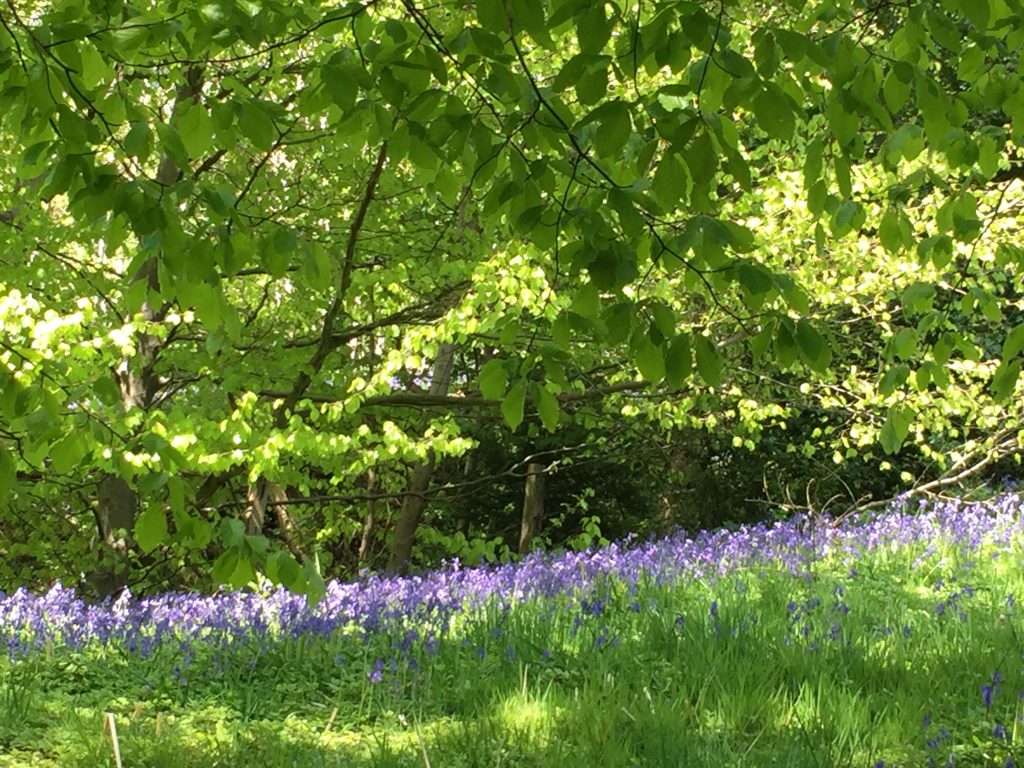
Yesterday I finished reading a very unusual book called ‘Break.up’ (her punctuation) by Joanna Walsh which I really enjoyed and so this morning I began to reread a book by Billy Holt called ‘I Haven’t Unpacked’ that Freda and Chris had given me as a birthday present last year. They live in Hawdon Hall, where some of my ancestors lived and they’ve done a pile of research into their property. As Chris was showing me some documents one day I kept seeing I haven’t unpacked written in the margin. I thought it meant he had more information that he hadn’t unpacked yet!
So today I started to reread the book thinking that with a year’s extra knowledge of the area I would enjoy the book even more. The first chapter describes his early life when his father ran a brewery from a small stone terrace on Stoney Lane, Charlestown. Now I’d found Stoney lane a couple of weeks ago as I walked to find Mulcture Hall, so I thought I’d go that way again for my walk . To prepare I looked at the Charlestown history site and noticed that Billy Holt’s brewery is mentioned on a walk, complete with map and description of historical sites along the way so off I trotted.

On the way there I passed Stubbins Wharf pub and thought I’d see if I could locate Stubbin House. I looked for it a couple of times but this time I found it, right next to the canal just beyond Stubbins Wharf pub. How many times must I have passed it, unknowing of its connection with my family, walking along the canal. Charles Lord lived there in 1901 and 1911. In 1886, he went into partnership with Johnathan Stansfield at Hebden Bridge producing fustian and other materials. He became sole proprietor of the business in 1895.He was a member of Hebden Bridge UDC and a member of the Todmorden RDC [1895] and a Guardian of the Todmorden Union.
Born at Old Chamber in 1856 to John Lord, a butcher and farmer, and his wife Catherine the family had moved to Lee’s yard and were on the census in 1861 and 1871. He married Charlotte Ann Gibson, and it is through this union that I am related to Charles Lord. Charlotte had been born, along with 4 other siblings, in Russia when her dad, William, an engineer/mechanic was there from 1851-1860. 1881 find Charles in Albert street and from 1891 to 1901 he is living with his family in some comfort, presumably, at Stubbin House.
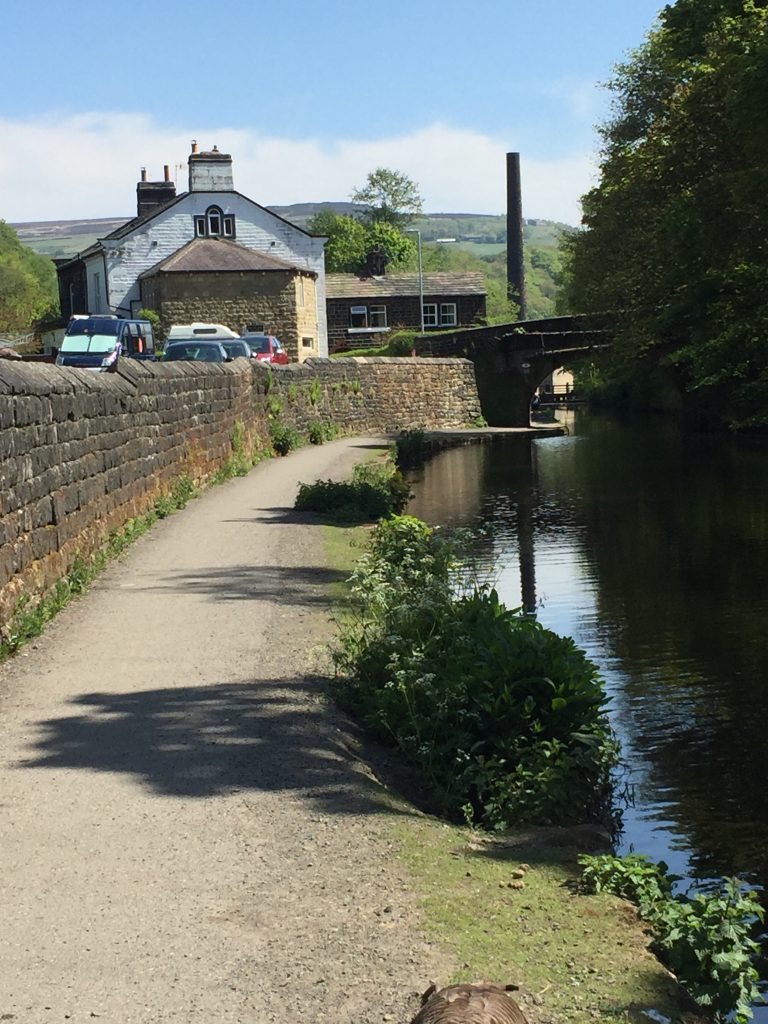
It is now split into two houses, and there is a large addition to the side and rear. It’s currently up for sale at £475,000, which is really high for Hebden Bridge! A 4 bedroom period semi detached with large, well maintained garden, and parking for 2 cars – unheard of in the centre of Hebden Bridge! By 1911 he was back at old Chamber where he had been born.
(Update: Oct 7. On Monday I was taking a walk along the canal and as I passed Stubbin House a lady – with doggy – was just coming out from the garden. I’d noticed a few weeks ago that the For Sale signs had disappeared, so I asked her if she lived there. “I will, beginning Friday,” she cheerfully responded. I explained my interest in the house and she said that life up a the top of Cragg Vale had become too difficult. I joked about there being llamas that seem to enjoy the high altitude. “Oh, those are my llamas. Alpacas, too.” My friend had stayed at her Airbnb llama farm back in 2017. Small world!)
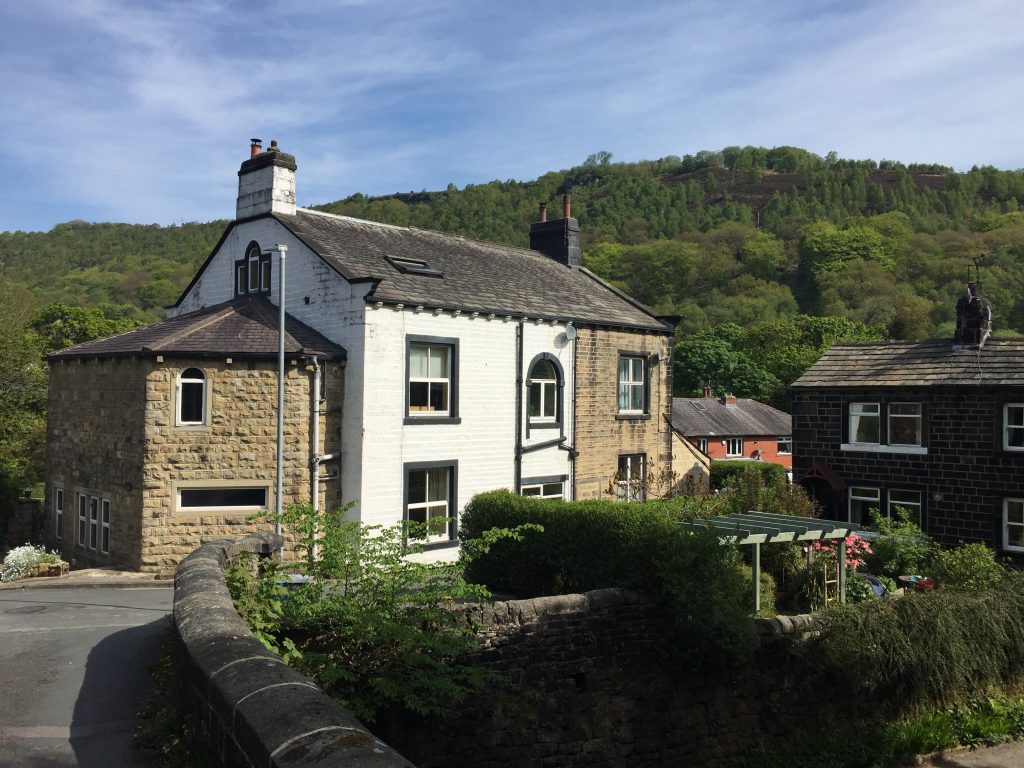
I did indeed find the row of cottages in which the brewery was located and discovered that I had taken a photo of the end house a couple of weeks ago because there was a trampoline placed above a garage!
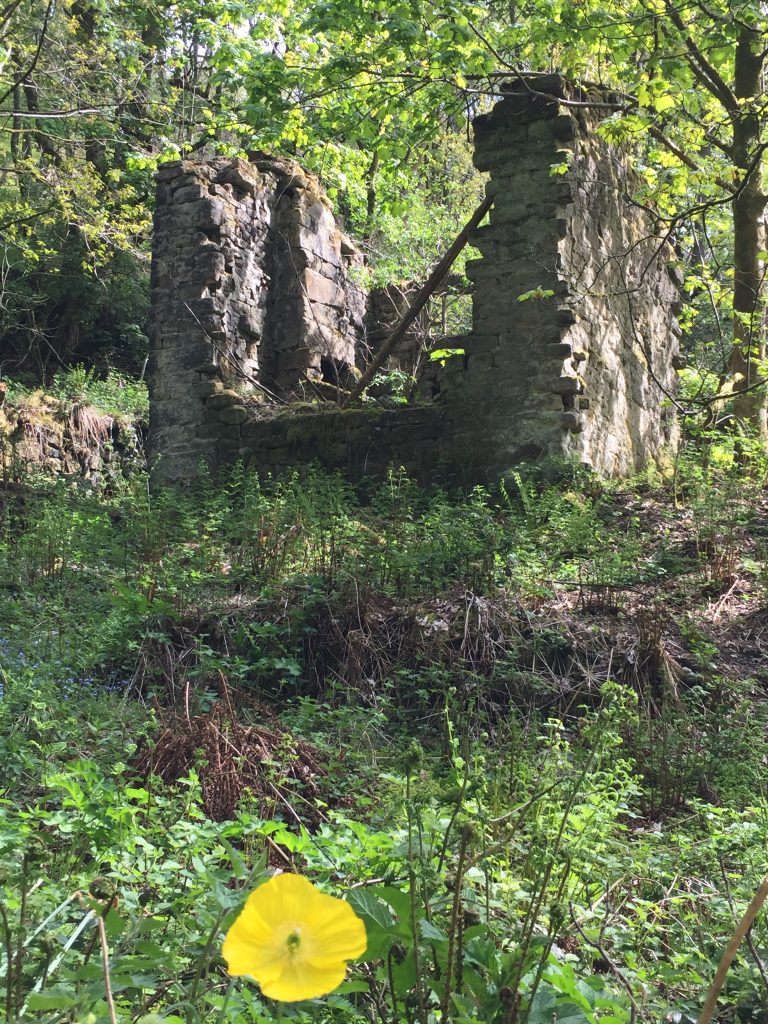
I stopped for a little picnic in the ruins of Jumble Hole mill . Opposite me some ivy covered ground where believe it or not there were ten dwellings. A few collapsed walls are all that remains of the five storey Spa Mill that started life as a water-mill.
I then took a short detour that the guide book recommended to see an amazing flight of well worn steps that the mill workers would take to the mill. My question, therefore, is where did they live? The remains of Cow Bridge Mill can be seen on the far side of the river (late 18th century, used for worsted and cotton spinning).
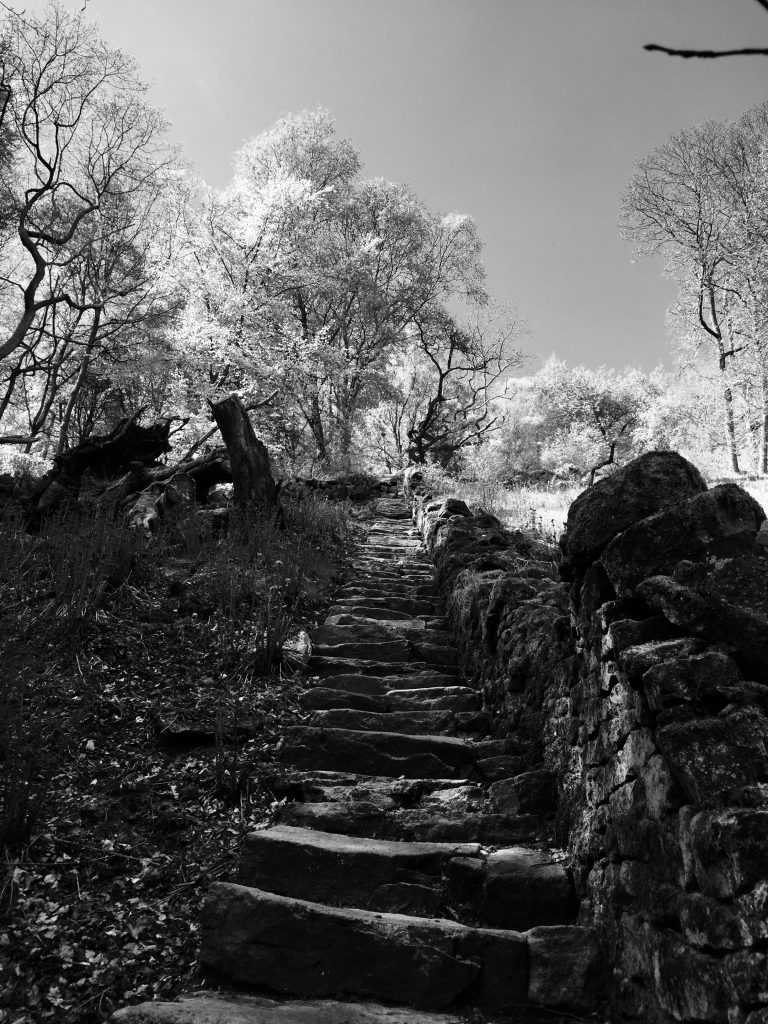
I was now retracing the steps that I’d taken a few weeks ago, following the Pennine Way. On that occasion I’d taken the very steep high road up to Winters. This time I carried on straight eager to see the ruins of Mt Olive chapel. I couldn’t believe I’d passed so close to it the first week without seeing it. I guess that’s what guide books are for!
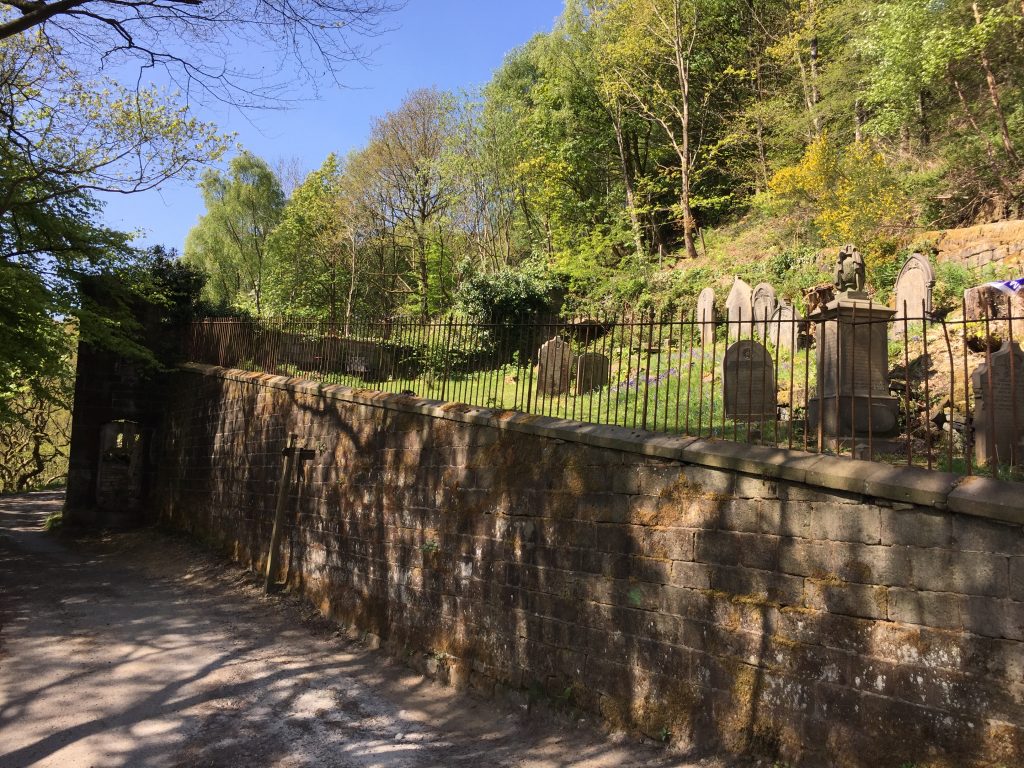
From the side I was approaching from all I could see was an old wall, maybe 10 ft high with a semi boarded up window, but when I came around to the front I saw a steep path, still with its iron railings in place, and then several gravestone, some quite ornate.
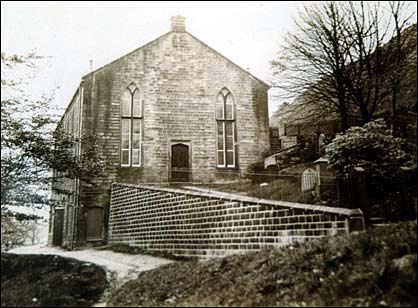
There were no buildings close by, just an amazing view over the valley (and the sewage works) across to Stoodley Pike. A chair and table – with boots – were set in place for the weary traveller. From the Charlestown history page: The chapel opened in 1842 after occasional services were held in the area since 1836. The chapel was an offshoot of mount Zion at Heptonstall. Some extracts from the Underbank Mill Sunday school minute book record:
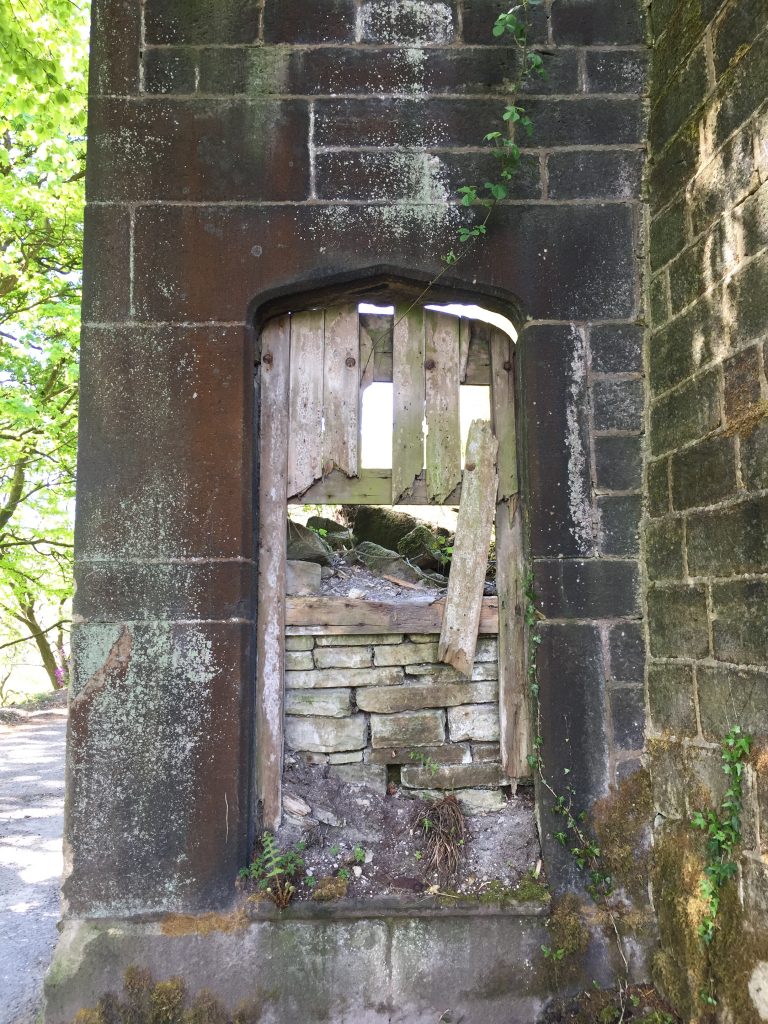
- The first entry in June 30th 1845 “School meeting held at the hall?, Samuel Smith in the chair”
- 1846 “The name of the building Mount Olivet to be inscribed on stone on the front of the building”
- The minister receives 10 shillings a week
- “1866 Looking for a teacher for the day school and a preacher”
- On 19th april 1868, John Uttley, a well known temperance veteran, died at Naze Bottom residence. He was one of the oldest abstainers in existence, being one of the founders of teetotalism and at one time a colleague of the famous Joseph Livesey (Tod. Almanac 1871)
- 9th November 1872, “9 people to be baptised in the lodge owned by Mr. Stead at Jumble Hole”
- In 1876 there were 58 members
- In 1885 the minister was Rev.J.H.Smith
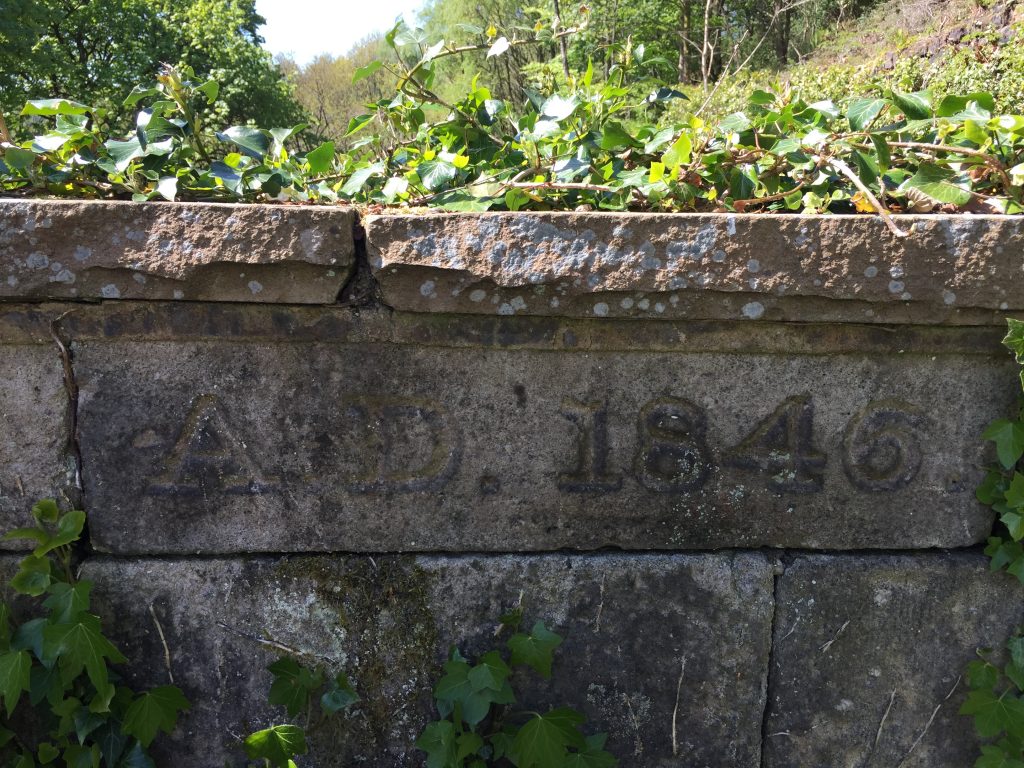
1846 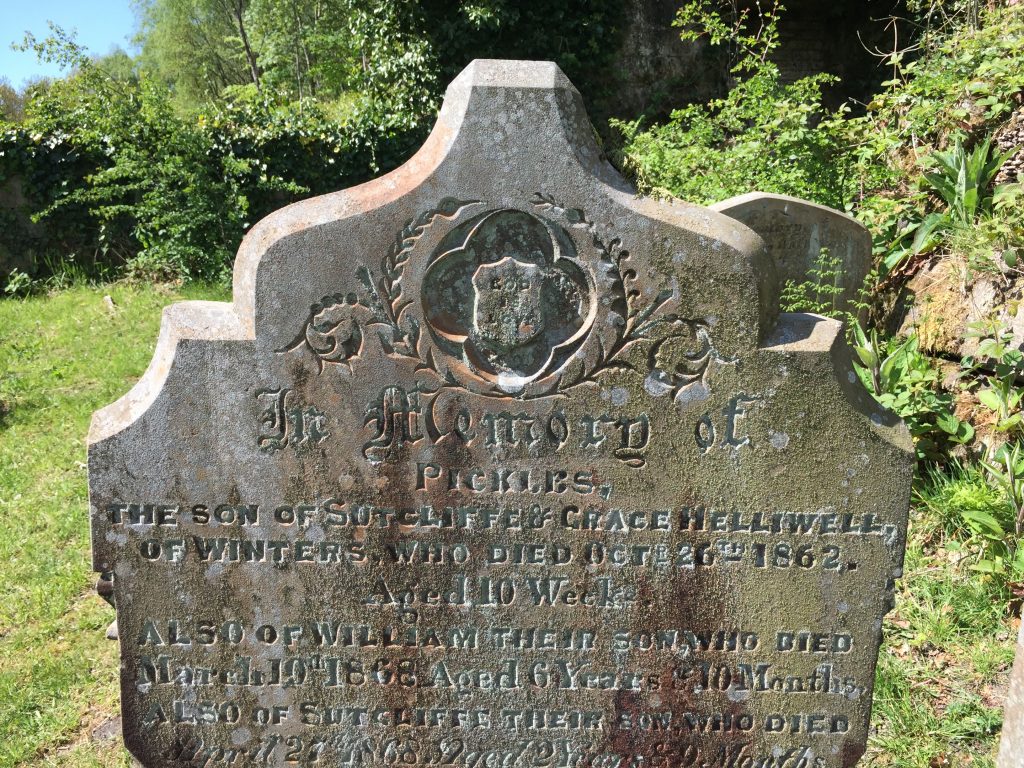
Pickles? 

Hmmm
In 1909 the Chapel was moved down to the Halifax road with the old chapel being demolished after the war. Every year the old chapel used to have an anniversary celebration with brass band. Ah, this must be the brass band I wrote about in an previous post.
I continued on my way remarking on the good quality of the stone sets paving the road and soon I came to Nabby Nook cottage where is little stone sign recorded there laying of the stone sets in 2014.

Today Nabby Nook, with its bright blue and white painted walls and windows looked almost Mediterranean under this morning’s clear blue sky. A couple of times the track led down cobbled paths so steep that I could hardly negotiate them!
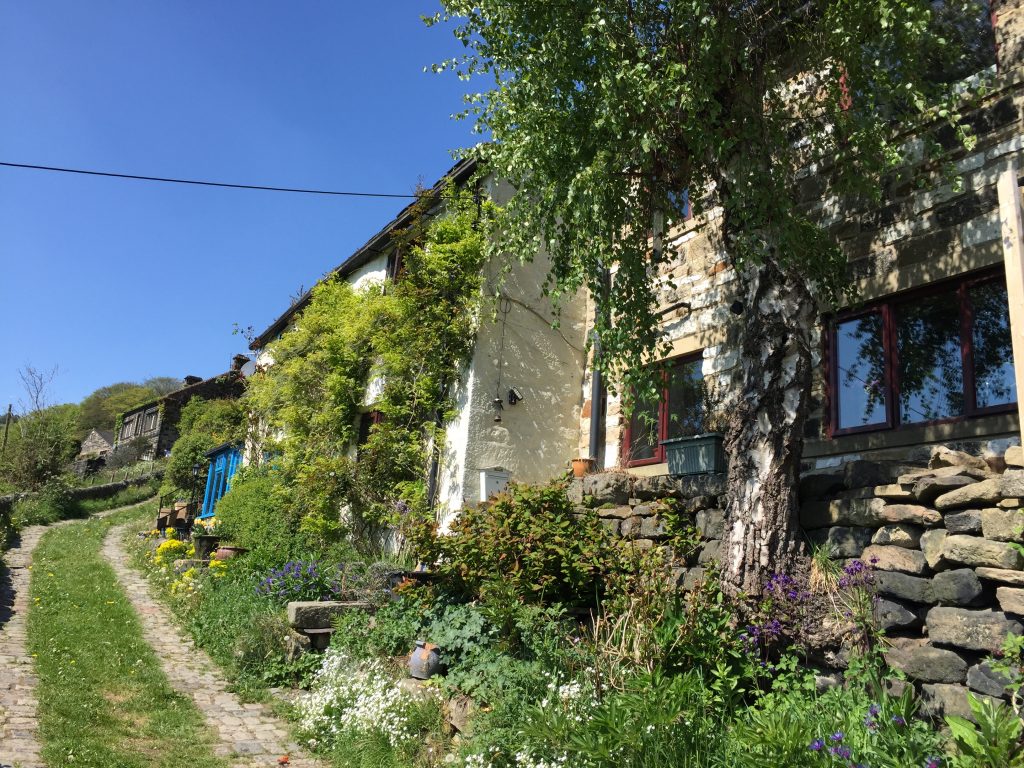
Eventually I arrived at the flatter land with its scattered mansions, Higher Underbank, and Knott Hall. “The main dwelling is Higher Underbank House which was thought to have been built about 1612, but around 1770 a new frontage was added. This is a fine example of a yeoman clothier’s house where spun wool would have been brought to and sent out for weaving and the finished product then sent out to market. On the rear wall you can see the blocked up intake door where goods would have been hoisted up.” I found this too from Dr David Harrison: “The family of Christopher Rawdon – a nineteenth century philanthropist who is the subject of my next book – once owned much of the valley around Underbank Hall, and a walk along the wonderfully named Jumble Hole Clough reveals an array of derelict mill, lost graveyards and workers cottages.”
The present site of the Air Training Corps is the original site of Charlestown. On this incredibly small site there were 14 back to back dwellings. Two pieces from the Todmorden Almanac report that in July 1830 a child was born with four legs! and in 1880, “scarlatina of a malignant type broke out causing two fatal cases, the origin was undiscovered”.
We don’t know the date the terraces were built were built at present.
- In the 1851 census 68 people living there with 7 vacant houses
- In the 1920s several houses were empty.
- In the 1920s one of the dwellings was a cobblers shop run by Teddy Speak who was also known as peg leg
- A Mrs Johnston ran a bakers from her house making onion and potato cakes and who used to supply dinners for Callis Mill.
- There was a sweet shop that was run from someone’s front room
- Old Charlestown was demolished in the mid 1950s and became lock-up garages. – from the Charlestown history site.
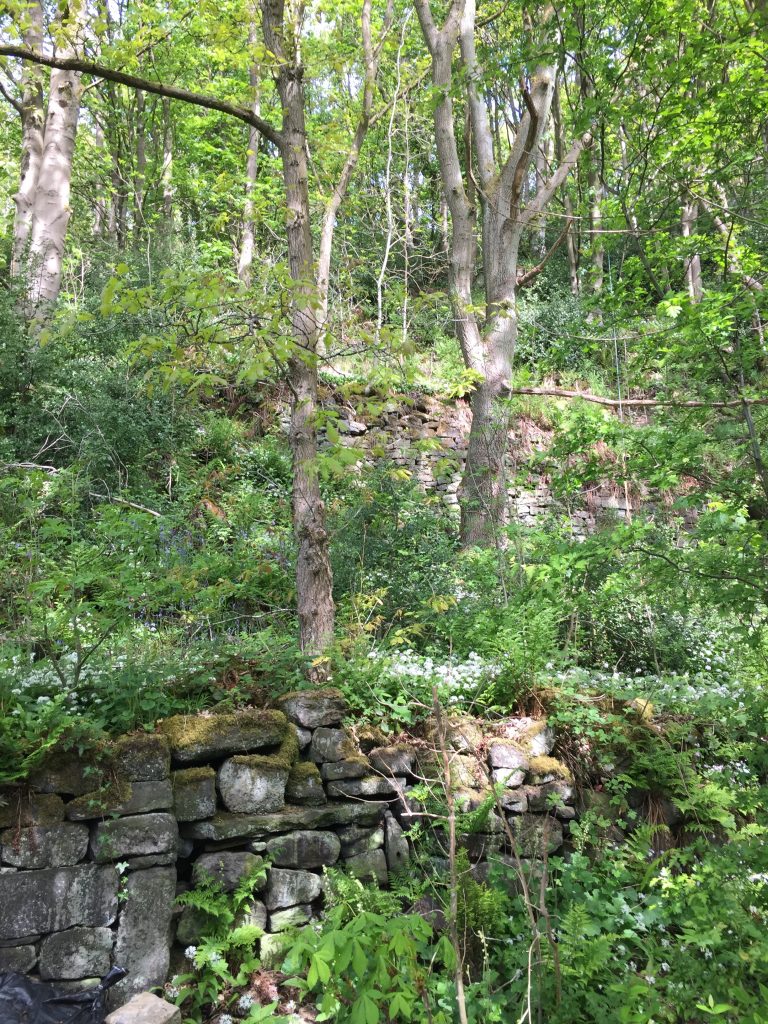
Site of Old Charlestown
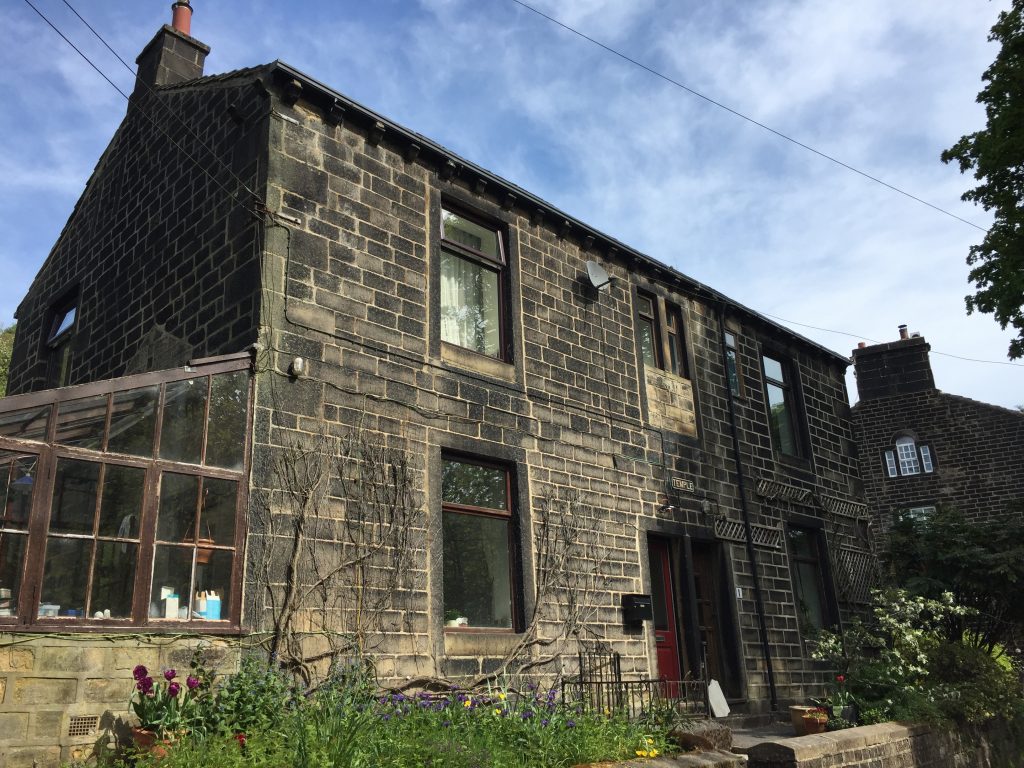
I passed ‘Temple.’ I’ve seen that I had ancestors living here but I can’t find out anything about the derivation of this strange name. As I returned to Hebden along the main road I saw the ‘new’ Naze Bottom Chapel which is now a private residence.
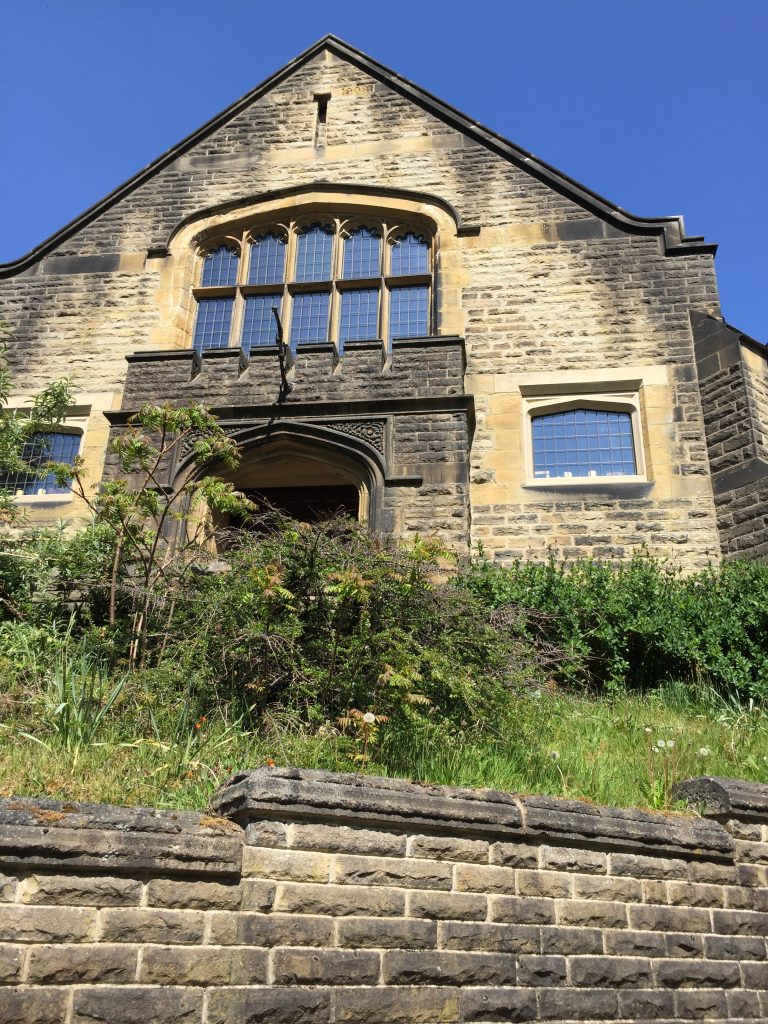
The chapel was built to replace Olivet Chapel on the hillside. In November 1906 “a grand bazaar was held in the Co-operative Hall, Hebden Bridge, whereby a sum exceeding £700 was raised in aid of the Nazebottom scheme”. The first sod was cut in July 1908 and was opened in March 1909 by Mrs E.J.Crossley of Royd House.
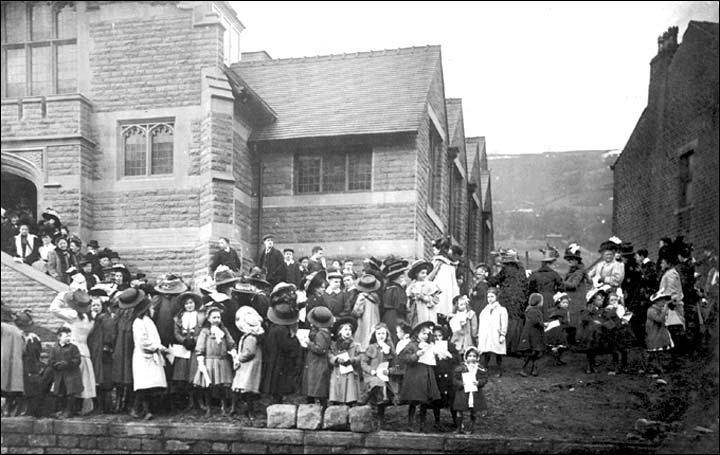
Leave a Reply